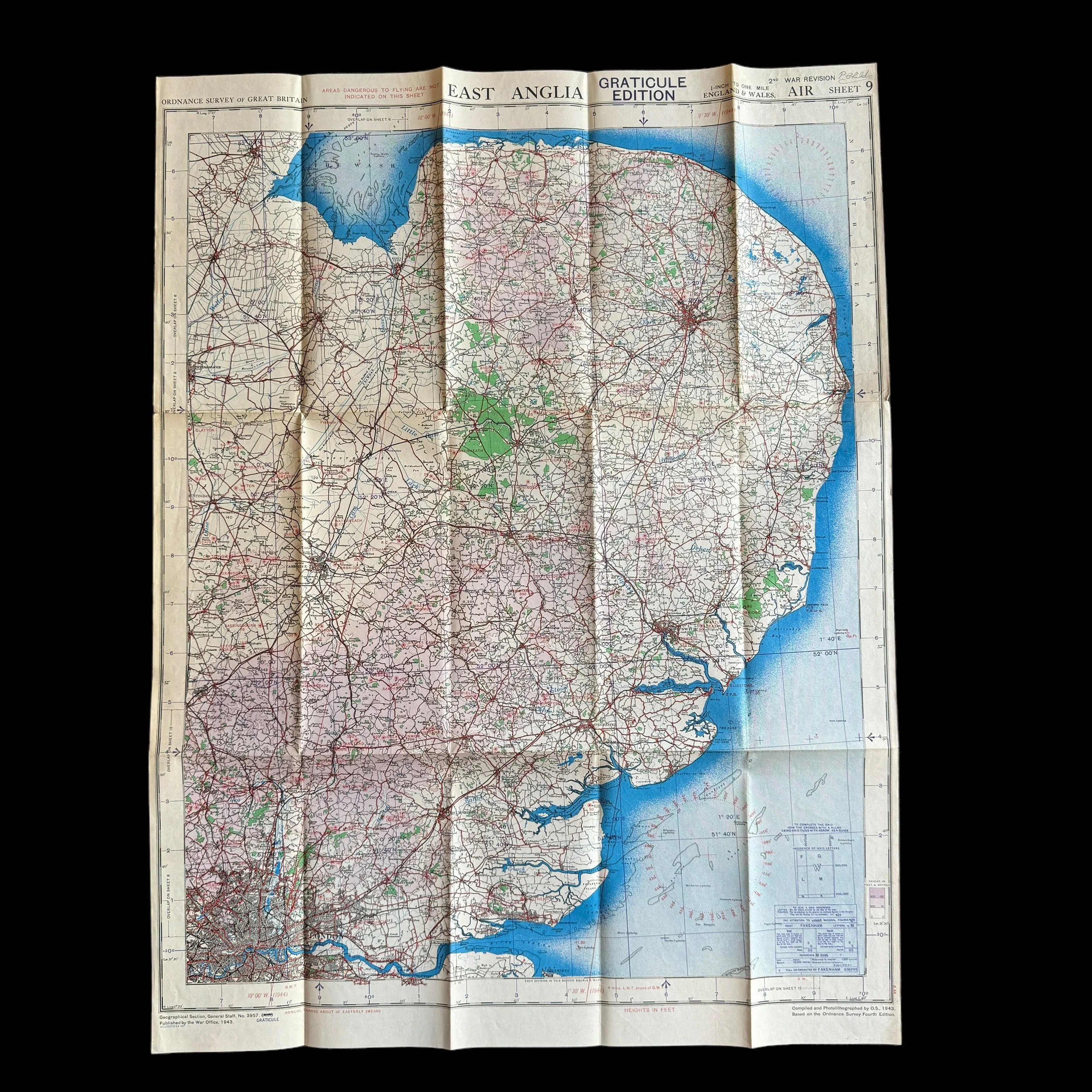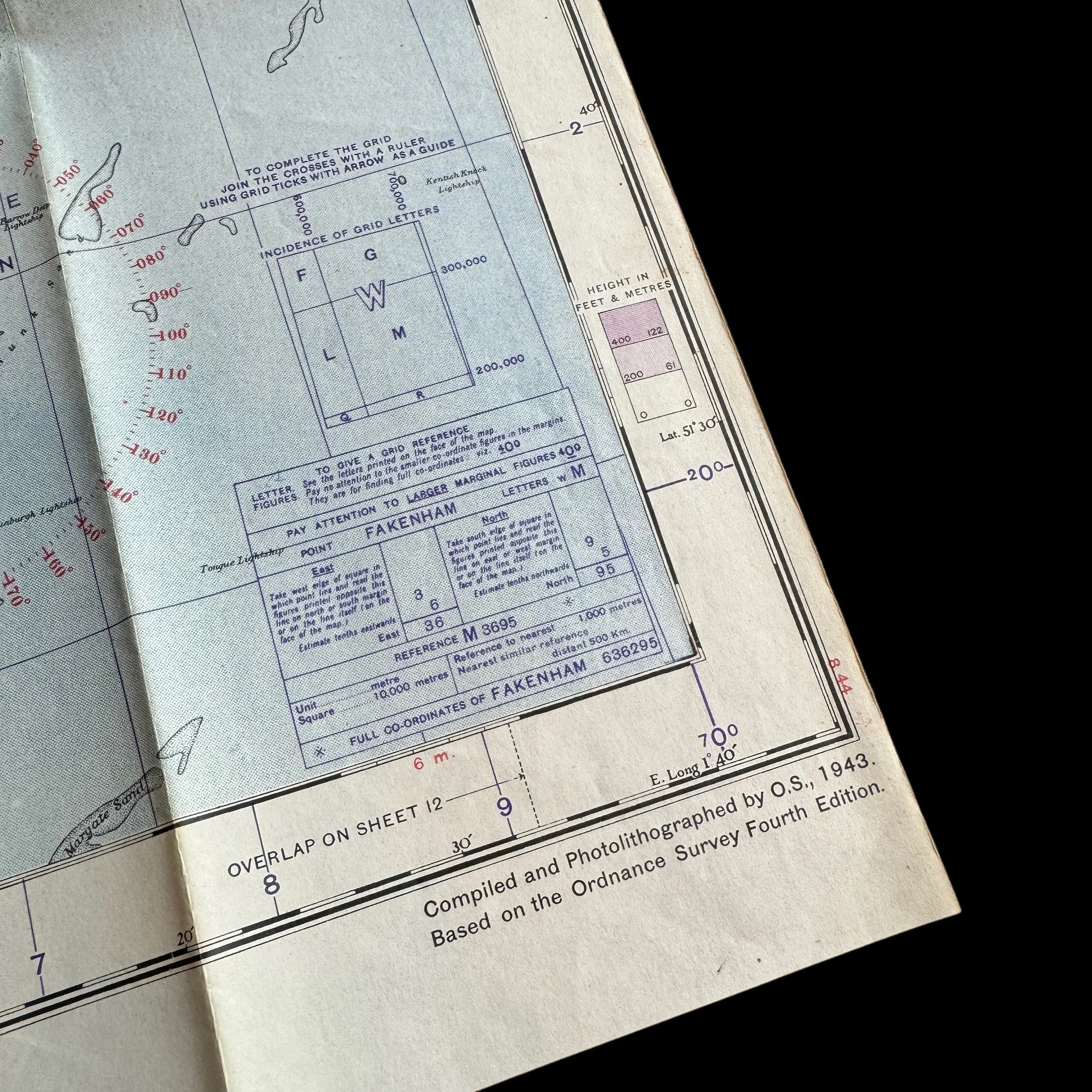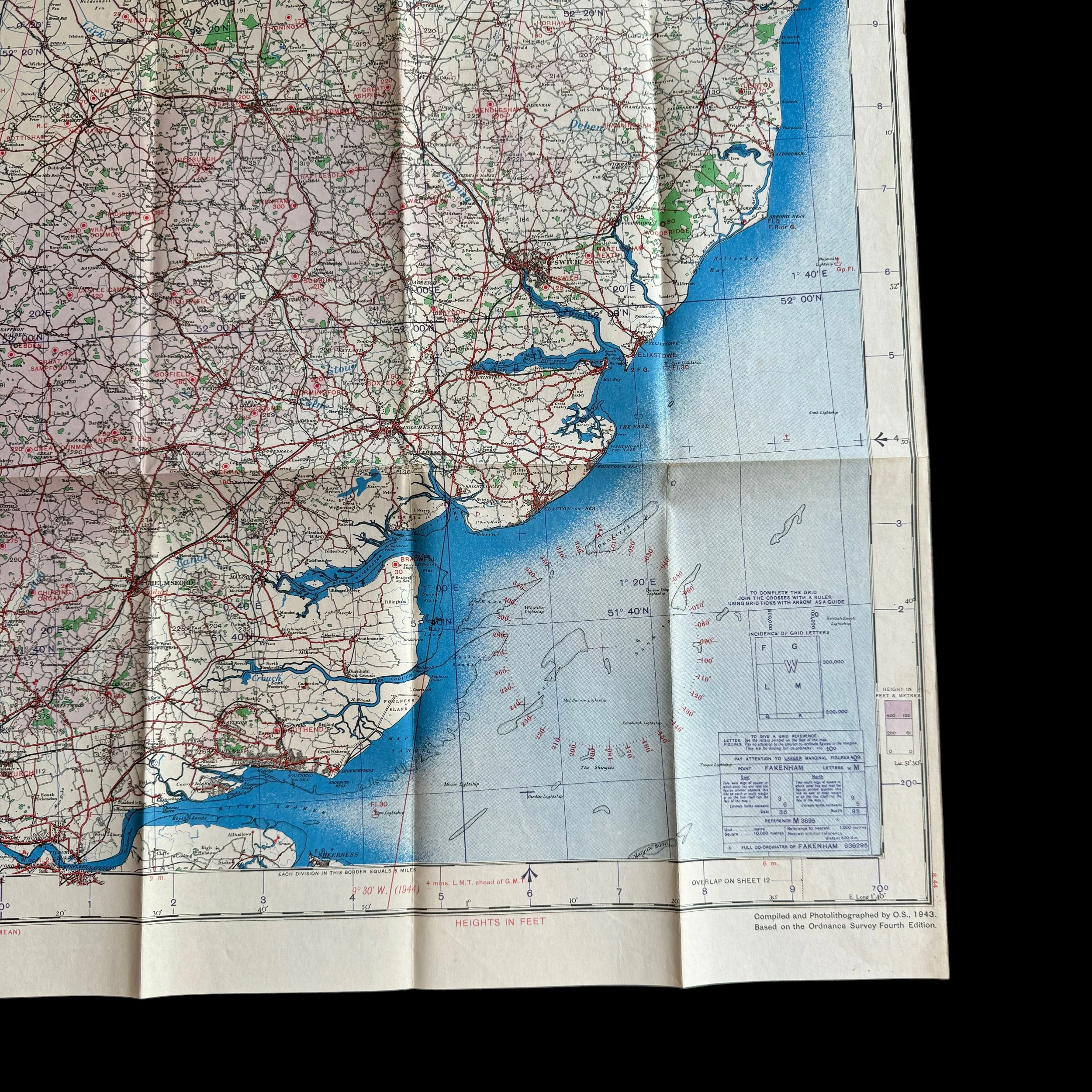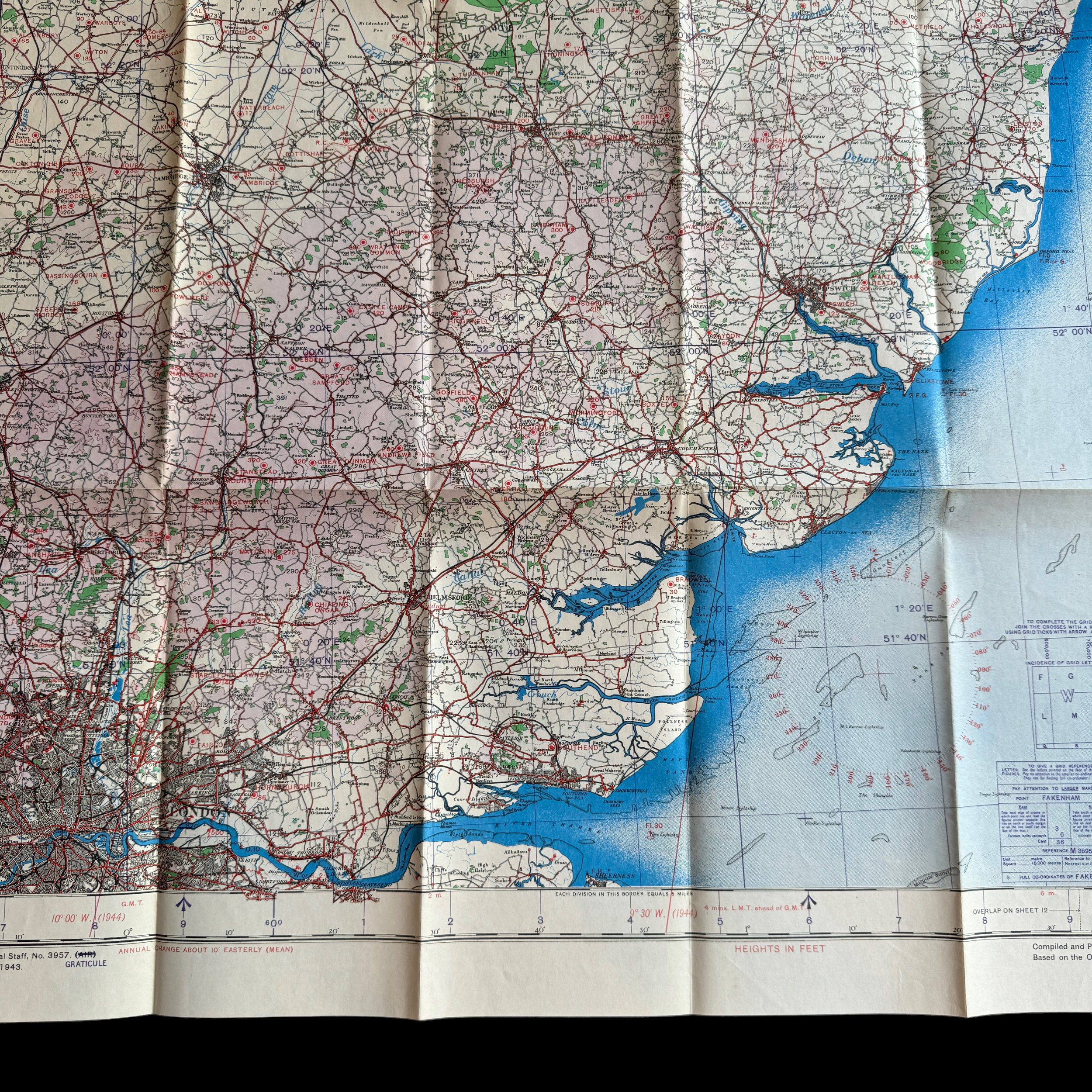WWII 1943 Royal Air Force Fighter Command “GRATICULE EDITION” RAF Pilot Air Map


































WWII 1943 Royal Air Force Fighter Command “GRATICULE EDITION” RAF Pilot Air Map
Comes with a hand-signed C.O.A.
This rare and museum-grade WWII Royal Air Force Fighter Command “GRATICULE EDITION” pilot air map was used during the height of combat in the European Theater. Dated 1943 with predictions made for 1944 this RAF pilot map indicates every Royal Air Force squadron base in England and Wales. This RAF pilot map is signed in the upper right of the map and also features elevation markers, navigational guides, and a place to place a navigational compass.
The Royal Air Force (RAF) Fighter Command played a pivotal role in the defense and offensive strategies of the United Kingdom during World War II. From 1943 to 1945, this period marked a significant phase in the aerial combat dynamics of the war, characterized by rapid technological advancements, strategic shifts, and the crucial role of intelligence and navigation aids such as the GRATICULE EDITION pilot map. This research explores the evolution of RAF Fighter Command during these years, the deployment and action of various RAF squadrons, and the geographical spread and strategic importance of air bases in England and Wales.
RAF Fighter Command: Strategic Evolution (1943-1945)
The period from 1943 to 1945 was critical for RAF Fighter Command. After the Battle of Britain, the Command had proven its worth, but the ongoing demands of the war required continuous adaptation. Fighter Command had to address both defensive duties against German air raids and offensive tasks which included providing escort to bombers over Europe and conducting tactical air raids on enemy positions.
Technological and Tactical Advancements
During this period, RAF Fighter Command incorporated significant technological advancements, including the introduction of more capable aircraft such as the Supermarine Spitfire IX and the Hawker Tempest. These aircraft featured more powerful engines, improved armaments, and better avionics, which were crucial for the challenging missions ahead.
Moreover, radar technology continued to evolve. Ground-based radar systems were complemented by airborne intercept radars, enhancing the RAF's capability to engage enemy aircraft during night operations and in poor weather conditions. The use of these technologies transformed the tactical approaches of RAF squadrons, allowing for more effective interceptions and broader defensive coverage.
Role of Intelligence and Navigation
One of the lesser-known but crucial aspects of RAF operations was the use of the GRATICULE EDITION pilot map. This detailed map was vital for navigation and operational planning, providing pilots with a comprehensive view of the terrain, airbase locations, and other strategic points. The graticule references, essentially a grid system overlay on the map, enabled precise navigation and target identification, which was critical for success in missions across Europe, particularly in the intricate and hazardous task of night flying and bad weather operations.
RAF Squadrons and Their Operations
From 1943 to 1945, numerous RAF squadrons were stationed across England and Wales, each playing distinct roles ranging from defensive intercept missions to offensive ground attacks and reconnaissance.
Key Squadrons and Their Aircraft
Squadron 303 (Polish) - Spitfire IX: Composed primarily of Polish pilots, this squadron was famous for its aggressive tactics and high kill rates.
Squadron 92 - Spitfire IX and later Tempest V: Played a crucial role in the Normandy operations, providing air support for the Allied landings and subsequent breakout.
Squadron 617 “The Dambusters” - Lancaster B III: Specialized in precision bombing, using the famous "bouncing bomb" for their initial raids and later adapted to Tallboy and Grand Slam for penetrating hardened targets.
Each of these squadrons adapted their tactics based on the aircraft they were equipped with and the nature of their missions, showcasing the flexibility and responsiveness of Fighter Command during the war.
RAF Air Bases in England and Wales
During World War II, England and Wales hosted a dense network of RAF air bases, which were crucial for the rapid deployment of squadrons and the effective coverage of British airspace as well as offensive operations over Europe.
Strategic Locations and Roles
RAF Biggin Hill (Kent): Served as one of the primary fighter bases protecting London and the southeast of England. It was heavily involved throughout the war in defensive as well as offensive operations over the continent.
RAF Pembrey (Wales): Played a vital role in training and operational missions, especially in the western approaches, protecting Atlantic convoys.
RAF Northolt (West London): Key in the defense of London and also served as a base for several Polish squadrons within Fighter Command.
These bases were integral not only for their geographical strategic advantages but also for their operational capacities, including advanced runways, maintenance facilities, and accommodations necessary for the support of extensive air operations.
The years 1943-1945 were crucial in the history of RAF Fighter Command, marked by significant advancements and relentless operations that significantly contributed to the Allied victory in World War II. The deployment of technologically advanced aircraft, the tactical brilliance of its squadrons, and the strategic use of the GRATICULE EDITION pilot map and other navigation aids underscored the RAF’s adaptability and effectiveness. Furthermore, the network of air bases across England and Wales provided the necessary infrastructure to sustain these operations, proving to be as vital as the airmen and machines they supported. Through these collective efforts, RAF Fighter Command not only safeguarded the British Isles but also facilitated the broader strategic goals of the Allies in Europe.